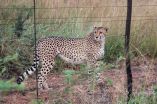(Press-News.org) Zoonosis—transmission of infections from other vertebrates to humans—causes regular and sometimes serious disease outbreaks. Bats are a well-known vertebrate reservoir of viruses like rabies and Ebola. Recent discovery of sequences in bats that are resemble influenza virus genes raised the question of whether bat flu viruses exist and could pose a threat to humans. A study published on October 2nd in PLOS Pathogens addresses this question based on detailed molecular and virological characterization.
Because no infectious virus particles were isolated from the bat samples in which the influenza-like sequences were identified, the authors of the present study, led by David Wentworth from the J. Craig Venter Institute in Rockville, USA, and Wenjun Ma from Kansas State University in Manhattan, USA, first addressed the question of whether the sequences are derived from infectious flu viruses or merely evolutionary relics of now defunct ancestors.
Using the published sequence information, they synthesized the entire genome (which consists of 8 genes) of a possible bat virus whose sequence was identified in 2009 (which they called Bat09) and put it into human tissue culture cells to see whether the viral sequences could (like human influenza viruses routinely do) hijack the cell's resources and machinery to manufacture bat flu viruses. It turned out they could: thousands of spherical influenza-like virus particles budded from the human cells into the culture medium. However, when they tried to infect a range of cells from different vertebrate species (including dog, pig, mink, monkey, human, and bats) with the Bat09 particles, they were unable to infect any of them.
Two surface influenza proteins, hemagglutinin (HA) and neuraminidase (NA), are located on the viral surface and known to be necessary for viral entry into host cells and viral particle release. Because bat influenza HA and NA are quite different from those of other flu viruses, the researchers replaced the two genes with those from another laboratory-adapted human flu virus called PR8 that can infect and multiply in a range of vertebrate cells, and also in chicken eggs. After they made sure that only the gene sequences that code for the HA and NA proteins but not the adjacent ones that direct packaging of the gene into new bat flu viral particles were switched, they found that this hybrid genome produced viruses that could infect and multiply in different vertebrate cells and in eggs.
Like the parental PR8 virus, the hybrid virus could also infect mice and cause serious flu-like illness. However, this seemed to be caused mostly by the PR8-derived HA and NA genes, because when the researchers created hybrids like before between Bat09 and a swine flu virus called TX98 that can infect mice but doesn't cause disease, the hybrid viruses behaved similar to TX98. When they tested some of the 6 genes who were still from Bat09, they could show that they function very similar to their counterparts from other (non-bat) flu viruses. One of them, for example, bat NS1, is a potent suppressor of the host immune response. The toxicity to mice of a second one, called PB2, could be manipulated by very small changes that made bat PB2 more like known very toxic or less toxic variants.
Reassortment (the random combination of genome parts from two or more different flu viruses that have co-infected a host cell) is responsible for most flu pandemics, because humans have little or no immunity against some of these new reassorted viruses. Based on several different tests for Bat09's ability to reassort with flu viruses from other species, it appears that bat influenza virus has very limited genetic and protein compatibility with Type A or Type B influenza viruses and may actually be a new type of influenza virus, which makes reassortment highly unlikely if not impossible.
"Collectively", the researchers conclude, "while our data suggest that the bat influenza viruses are authentic viruses and provide new insights into the evolution and basic biology of influenza viruses, the results also indicate that they pose little, if any, pandemic threat to humans."
INFORMATION:
Please contact plospathogens@plos.org if you would like more information about our content and specific topics of interest.
All works published in PLOS Pathogens are open access, which means that everything is immediately and freely available. Use this URL in your coverage to provide readers access to the paper upon publication:
http://dx.plos.org/10.1371/journal.ppat.1004420 (Link goes live upon article publication)
Related Images for Press Use:
1) http://www.plos.org/wp-content/uploads/2013/05/Pathogens_October_2_Wentworth.jpg
2) http://www.plos.org/wp-content/uploads/2013/05/Devra-Flickr-Pathogens-Oct-2.jpg
Captions:
1) EM picture of Bat09 Credit: Bin Zhou et al., CC BY 2.0
2) Pallid Bat Credit: Devra, Flickr, CC BY 2.0
Contact:
David Wentworth (who after this study was completed moved to the Centers for Disease Control and Prevention in Altlanta, USA)
e-mail: dwentworth@cdc.gov
phone: +1.404.639.3387
Wenjun Ma
e-mail: wma@vet.k-state.edu
phone: +1.785.532.4337
Authors and Affiliations:
Bin Zhou, J. Craig Venter Institute, USA
Jingjiao Ma, Kansas State University, USA
Qinfang Liu, Kansas State University, USA
Bhupinder Bawa, Kansas State University, USA
Wei Wang, J. Craig Venter Institute, USA
Reed S. Shabman, J. Craig Venter Institute, USA
Michael Duff, Kansas State University, USA
Jinhwa Lee, Kansas State University, USA
Yuekun Lang, Kansas State University, USA
Nan Cao, Kansas State University, USA
Abdou Nagy, Kansas State University, USA
Xudong Lin, J. Craig Venter Institute, USA
Timothy B. Stockwell, J. Craig Venter Institute, USA
Juergen A. Richt, Kansas State University, USA
David E. Wentworth, J. Craig Venter Institute, USA
Wenjun Ma, Kansas State University, USA
In-depth analysis of bat influenza viruses concludes they pose low risk to humans
2014-10-02
ELSE PRESS RELEASES FROM THIS DATE:
Study of mountain lion energetics shows the power of the pounce
2014-10-02
Scientists at the University of California, Santa Cruz, using a new wildlife tracking collar they developed, were able to continuously monitor the movements of mountain lions in the wild and determine how much energy the big cats use to stalk, pounce, and overpower their prey.
The research team's findings, published October 3 in Science, help explain why most cats use a "stalk and pounce" hunting strategy. The new "SMART" wildlife collar--equipped with GPS, accelerometers, and other high-tech features--tells researchers not just where an animal is but what it is doing ...
Thermotolerant yeast can provide more climate-smart ethanol
2014-10-02
VIDEO:
This is a video interview with Jens Nielsen.
With a simple mutation, yeast can grow in higher than normal temperatures. Researchers at Chalmers University of Technology demonstrate this in an article...
Click here for more information.
With a simple mutation, yeast can grow in higher than normal temperatures. Researchers at Chalmers University of Technology demonstrate this in an article to be published in the scientific journal Science. The findings may result in ethanol ...
Cheetahs never prosper: Energy expenditure linked to population decline
2014-10-02
Wild cheetah populations have declined precipitously in the past century: from an estimated 100,000 in 1900 to only around 10,000 today. A new study from researchers in Europe, South Africa and at North Carolina State University suggests that the energy cheetahs spend looking for prey, rather than their high-speed hunting tactics or food stolen by other predators, may be to blame for their dwindling numbers.
Cheetahs are high-speed hunters, but are not the strongest predators in their ecosystems. Often, hyenas and lions will take advantage of this, stealing the cheetah's ...
Princeton scientists observe elusive particle that is its own antiparticle
2014-10-02
VIDEO:
Princeton University researchers first deposited iron atoms onto a lead surface to create an atomically thin wire. They then used a scanning-tunneling microscope to create a magnetic field and to...
Click here for more information.
Princeton University scientists have observed an exotic particle that behaves simultaneously like matter and antimatter, a feat of math and engineering that could yield powerful computers based on quantum mechanics.
Using a two-story-tall microscope ...
HIV pandemic's origins located
2014-10-02
The HIV pandemic with us today is almost certain to have begun its global spread from Kinshasa, the capital of the Democratic Republic of the Congo (DRC), according to a new study.
An international team, led by Oxford University and University of Leuven scientists, has reconstructed the genetic history of the HIV-1 group M pandemic, the event that saw HIV spread across the African continent and around the world, and concluded that it originated in Kinshasa. The team's analysis suggests that the common ancestor of group M is highly likely to have emerged in Kinshasa around ...
New map exposes previously unseen details of seafloor
2014-10-02
Accessing two previously untapped streams of satellite data, scientists at Scripps Institution of Oceanography at UC San Diego and their colleagues have created a new map of the world's seafloor, creating a much more vivid picture of the structures that make up the deepest, least-explored parts of the ocean. Thousands of previously uncharted mountains rising from the seafloor and new clues about the formation of the continents have emerged through the new map, which is twice as accurate as the previous version produced nearly 20 years ago.
Developed using a scientific ...
New study suggests humans to blame for plummeting numbers of cheetahs
2014-10-02
A new study led by Queen's University Belfast into how cheetahs burn energy suggests that human activity, rather than larger predators, may force them to expend more energy and thus be the major cause of their decline.
Wild cheetahs are down to under 10,000 from 100,000 a century ago with conventional wisdom blaming bigger predators for monopolising available food as their habitat becomes restricted. The traditional thinking has been that cheetahs no longer have sufficient access to prey to fuel their enormous energy output when engaging in super-fast chases.
But, ...
New approach to boosting biofuel production
2014-10-02
CAMBRIDGE, MA -- Yeast are commonly used to transform corn and other plant materials into biofuels such as ethanol. However, large concentrations of ethanol can be toxic to yeast, which has limited the production capacity of many yeast strains used in industry.
"Toxicity is probably the single most important problem in cost-effective biofuels production," says Gregory Stephanopoulos, the Willard Henry Dow Professor of Chemical Engineering at MIT.
Now Stephanopoulos and colleagues at MIT and the Whitehead Institute for Biomedical Research have identified a new way to ...
Falling asleep: Revealing the point of transition
2014-10-02
How can we tell when someone has fallen asleep? To answer this question, scientists at Massachusetts General Hospital have developed a new statistical method and behavioural task to track the dynamic process of falling asleep.
Dr Michael Prerau, Dr Patrick Purdon, and their colleagues used the evolution of brain activity, behaviour, and other physiological signals during the sleep onset process to automatically track the continuous changes in wakefulness experienced as a subject falls asleep.
The study, publishing today in PLOS Computational Biology, suggests that it ...
Researchers identify new pathway linking the brain to high blood pressure
2014-10-02
VIDEO:
Dr. Frans Leenen, from the University of Ottawa Heart Institute, discusses the importance of these new findings.
Click here for more information.
Ottawa, ON and Baltimore, MD, October 2, 2014—New research by scientists at the Ottawa Heart Institute and the University of Maryland School of Medicine (UM SOM) has uncovered a new pathway by which the brain uses an unusual steroid to control blood pressure. The study, which also suggests new approaches for treating high blood ...




